The modern interior of the living quarters of our apartments makes new demands on facing materials. No, this is not the thesis of the progressive party, but the reality given to us in the sensation after visiting the construction supermarket. Tile for a bathroom, what is it and what qualities does it have?
Agree that the bathroom is unthinkable without facing strong tiles. Therefore, bathroom tiles should have the following performance characteristics:
• be resistant to temperature effects
• Possess a low porosity
• be resistant to any chemically aggressive media
• have a high quality external coating.
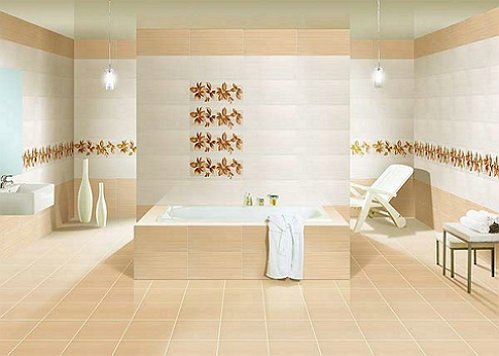
Certainly, that the aggregate of positive operational qualities is nothing, in comparison with the spectacular European appearance of the tile in the bathroom. Overview of the bathroom liner begins with general concepts, namely the types, material and purpose of the tile.
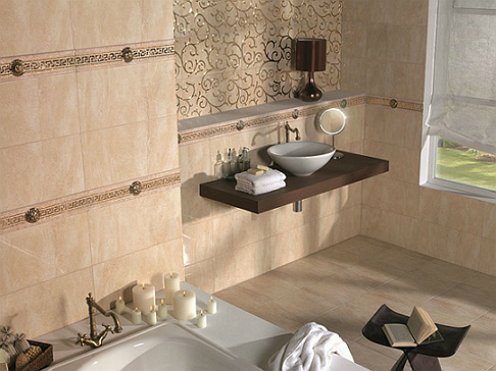
Types of bathroom tiles
By appointment, bathroom tiles are divided into two types:
• for wall covering (wall-mounted)
• for laying on the floor (floor).
What is the difference between these types of tiles? The main difference lies in the thickness and size of the tiles. Floor tiles have a thickness of at least 9 mm., And the thickness of the wall tile is about 6 mm. The most common size of floor tiles is the size 300 x 300 mm, the wall 200 x 300 mm.

Wall tiles have a soft structure. Thanks to this structure, it is possible to cut wall tiles for high-quality fitting during cladding and plumbing installation.
The floor tile has a low water absorption, a denser structure and considerable resistance to mechanical stress and abrasion. After all, it is not by chance that among the basic requirements for the quality of floor tiles can be noted:
• the presence of a rough surface, excluding the possibility of slipping and injuring
• ability to withstand a significant load on the bend
• presence of abrasion resistant outer layer.
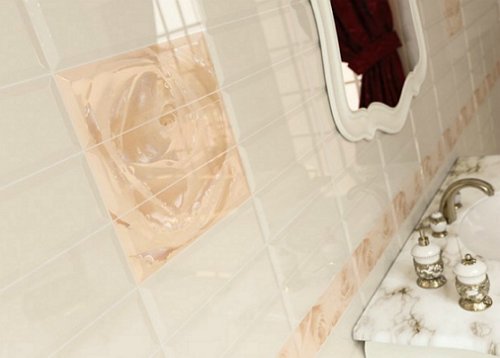
Material for making tiles
According to the material of manufacture, the tile in the bathroom is:
• earthenware
• ceramic
• Glass
• porcelain
• Mosaic
• stone
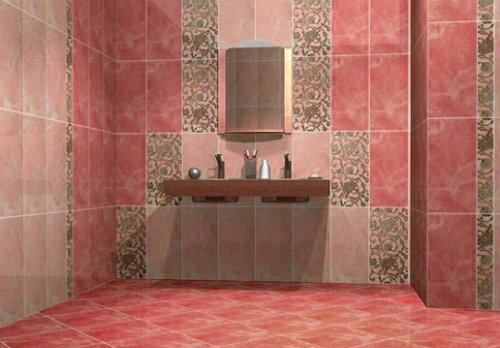
In terms of performance faiencetile is incomparable with anything: a meager degree of hygroscopicity simply does not allow moisture to be absorbed into the surface of the cladding. It is no accident that the pools are decorated with faience tiles.
The honorary leader in the segment of facing materials is ceramic tiles for bathroom room. High technology of production was awarded by its durability, homogeneous shiny surface and that richness of colors, which always shock us in building supermarkets and salons.
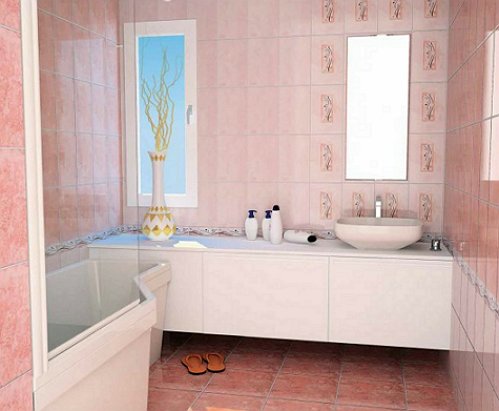
The bathroom tiled with ceramic tiles will have a respectable and stylish look for a long time. Therefore, we approach with a special care to the choice of ceramic tiles. Wall and floor tiles from one collection is an ideal option. Any collection is sustained in a general color scheme and theme, supplemented by original creative elements.
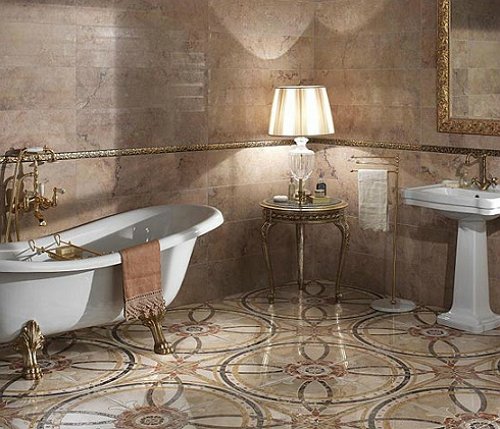
Glass the tile is visually incredibly attractive. Characteristic for glass gloss and the quality of the facing tiles create a unique design of the surface of the bathroom made of glass tiles. The only drawback is the fragility, so this type of tile is best used fragmentarily. This original design creates the impression of colorful frescoes and mosaics.
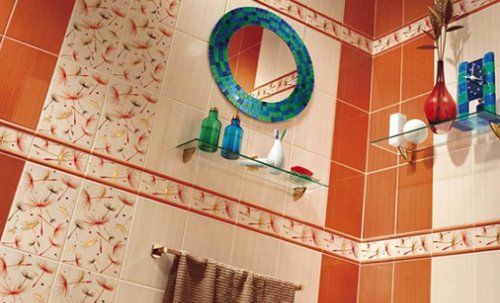
Porcelain tiles are distinguished by a dense homogeneous texture and strength. The natural qualities of porcelain allow not to glaze the surface of the tile, however, the polishing process gives the tile a complete attractive appearance. However, the significant price of facing porcelain tiles does not allow to occupy the first places in the segment of facing materials.
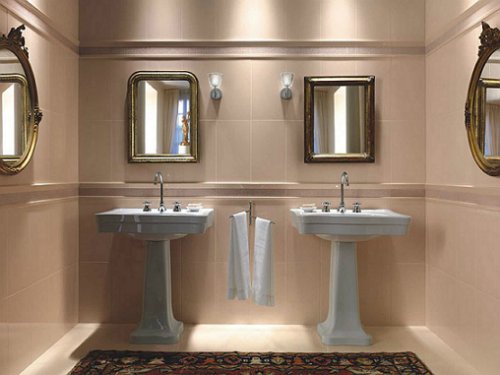
An elite variety of glass and ceramic tiles is mosaictile. Characteristic mosaic tiles, made in the form of small-sized squares, can not be confused with anything. There is something in these miniature squares from the mosaics of ancient eastern residents, where the mosaic personified luxury.
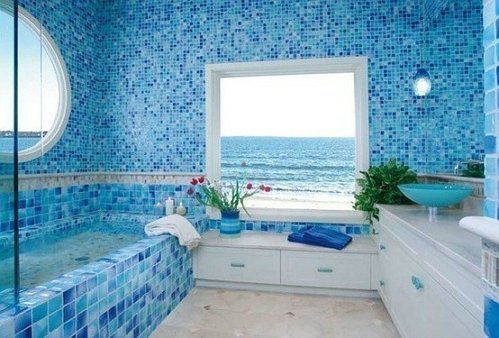
The wall is manufactured by manufacturers with a size of 20 x 20 mm, with a thickness of 4 mm. The floor has dimensions of 12 x 12 mm. a thickness of about 8 mm. The facing material is available as a matrix on a substrate. The finishes look great stairs and curved surfaces.
Do you want your bathroom to be exclusively tiled? To create such an interior tile mosaic for the bathroom will help you.
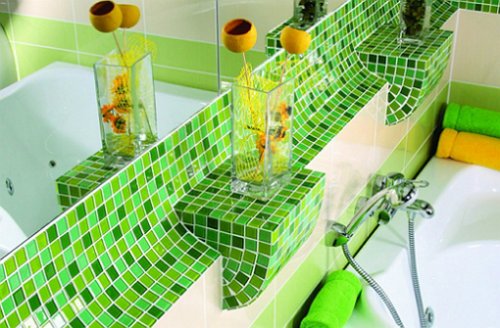
Stone facing tiles are, first of all, strength and long-term exploitation. This kind of tile is practically not subject to wear.
Trends in the design of tiles in the bathroom suggest aesthetics of the facing of the floor and walls, its harmony with objects and accessories. And then the human mind simply refuses to perceive the masterpieces seen.
Design of tiles in the bathroom
The choice of tile design must begin with the definition of the color scheme.
So traditional sea azure, revered by most bathroom owners, combined with a gentle pink color will give the bathroom ease and flight. Moreover, it is necessary to remember that warm colors create a comfortable atmosphere.
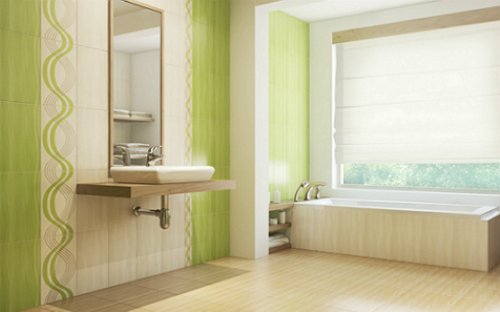
Most collections of bathroom tiles are made out of two consonant tiles according to color and the presence of drawings. Favorite combinations of colors are classic black and white, red-green, purple-lemon and an amazing combination of blue and bright orange.
In addition to color mixes in the design of bathroom tiles, there are different styling styles.
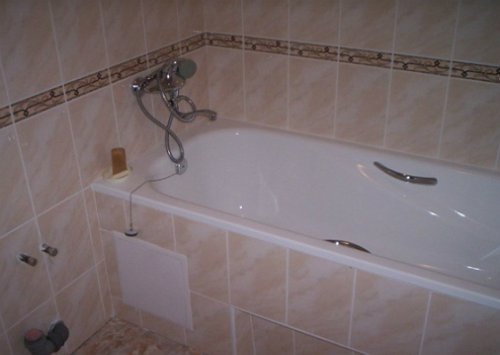
Basic styling styles:
• Classic (dark shade is placed at the bottom, and light, naturally, at the top)
• geometric (using geometric patterns - circles, triangles)
• photoprint (applying photographic images).
• ethnic (borrowed interior design of baths from other peoples).
Each powerful turn of the technology of facing materials gives rise to a new style of laying.
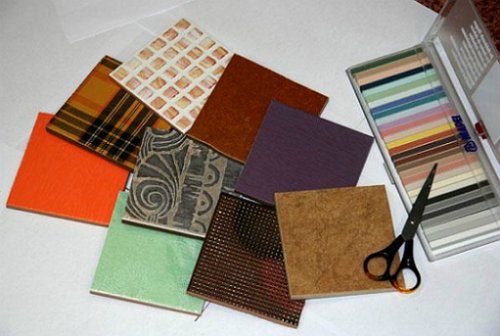
There is a tendency for more effective and priority styling styles to appear, the appearance of which we will learn in the near future.
Therefore, the style of laying tiles in the bathroom is the main component of the design, after the material, of course.



















